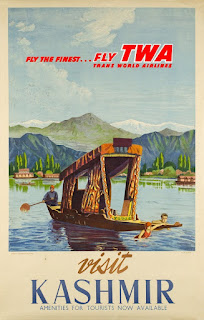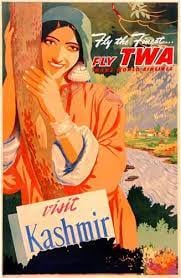Friday, December 31, 2021
REHNA NAHIN DES BIRAANA HAI.
RADHA , KRISHNA AND GITA GOVINDA.
“Kesava dhruta-mina-sharira…….Jaya Jagadisa Hare….”
( This opening Sloka from Jayadeva’s Gita Govind was sung by Hemant Kumar for the 1952 film Anand Math )
The Gita Govinda remains the most popular and influential poem to emerge from medieval India. The text was added to temple inscriptions, set to music, choreographed for dance, painted on canvas and studied as a religious text. The poem narrates the loves of Radha and Sri Krishna but also celebrates nature's regeneration and the interplay of the human and divine. The Gita Govinda is the earliest-known poem dealing with the theme of the divine lovers, Radha and Sri Krishna. Its verses were popular with Chaitanya, the 14th–15th-century Bengali saint, and continue to be sung even today at Bhajans and Kirtans throughout India.
The poem can be dated to the twelfth century and many lines of evidence point to Jayadeva being born in Orissa, probably in Kenduli Sasan village, which lies in the Prachi valley of the Khurda district of Odisha, Jayadeva himself is reputed to have been a saintly ascetic induced to settle by marrying the temple dancer, Padmavati, and take up writing the Gita Govinda. Jayadeva was attached to the Bengali court of King Lakṣmaṇa Sena (late 12th century). Jayadeva was closely associated with the temple of Jagannatha ( Sri Krishna) at Puri, where the recitation of his Gita Govinda was regularly performed by the temple dancers.
The highly original form of the poem, which inspired many later imitations, intersperses the recitative stanzas with 24 eight-line songs. The Gita Govinda is set up into 12 chapters . The poem explains the love of Sri Krishna for Radha. It also touches upon moving away and subsequent return of Sri Krishna to Radha which is symbolic of the human soul's wandering away from its true commitment but returning ultimately to its creator . The poem presents, in dramatic form, the lovers’ attraction, estrangement, yearning, and final reconciliation through the help of Sakhi (female confidant). The admirers of Gita Govinda include Chaitanaya , Gurunanak Dev Ji , Guru Arjun Dev Ji , Goethe, German poet Friedrick Rukert, Edwin Arnod, Sir William Jones, Barbara Stoler Miller, Gurudev Tagore , Qazi Nazrul Islam, Birju Maharaj , A. R Chugtai ( artist). Sahir Ludhianavai ( poet ) and many more.
It is clearly evident from Gita Govind that its author , Jayadeva had profound knowledge of music as he has clearly mentioned various Ragas in which the Songs contained in the Gita Govinda are to be sung. The works of Jayadeva have had a profound influence on Indian culture. They form the basis of the east Indian classical dance form, Odissi as well as the traditional classical music of the state, Odissi music and have strongly influenced the Bharatanatyam classical dance as well as Carnatic music. Jayadeva's composition has also been incorporated in the Guru Granth Sahib. Jayadeva was instrumental in popularizing the Dasavatara, the ten incarnations of Sri Krishna in his compositions. The Gita Govinda begins with a Dasavatara stotra.
It appears that Jayadeva was also influenced by the skill of many ancient authors when he wrote and designed Gita Govinda’s structure. One gets a glimpse of Valmiki’s Ramayana ( in the structure of the melodrama and anguish in the separation of lead characters ) , Bharata Muni’s Natyashastra for dance drama, Vaastaayana’s skill for romance and Kalidasa’s style for word selection, brevity, small words with big meanings, alliterations etc. Jayadeva has his own individual style for language, grammar and poetic aesthetics .
Jayadeva’s Gita Govinda had emerged as a painter’s theme by the late 15th century. Its influence can be seen in the traditional Patachitra paintings of Odisha.
Gita Govinda had profound influence on the Pahari school during the 17th-19th centuries,. It was quite popular throughout northern India bordering the Himalayas and Rajasthan . It served as the most popular themes for Kangra , Guler and Basohli paintings. Apart from various museums in India, miniature painting done on Sri Krishna and Radha themes based on Gita Govinda can be seen in many museums of Europe and the US. I quote some as under:-
1 Honolulu Museum of Art
2 Metropolitan Museum of Art, New York
3 Rietberg Museum, Germany
4 Guimet Museum, Paris
I quote some beautiful verses from the Gita Govinda :-
'Daravi-dalita-malli, valli-chamchat-paräga
prakatitha-pata-väsai:, väsayan käna…näni |
iha hi, dahati ceta:, ketaki-gandha-bandhu:…
prasarad asama-bäna pränavad-gandhaväha'
(Wind perfumes the forest with fine pollen shaken loose from newly blossomed Jasmine’s it blows love’s fragrant breath, it tortures every heart it touches.)
( Chapter 3 Sloka 9 Gita Govinda by Jayadeva )
'Madhavika-parimala-lalite nava-malati-jati-sugandhau |
muni-manasam api mohana-karii taruakarana-bandhau, Radhe viharati haririha '
(The nectar of spring flowers and the aroma of jasmine blossoms are enthralling. Even the minds of great sages are agitated in springtime and they suddenly become bewildered. Spring is the selfless friend of the young)
( Chapter 3 Sloka 6 Gita Govinda by Jayadeva )
'Kshamyatam aparam kadapi, tavedrusham na karomi |
dehi sundari darsanam mama manmathena dunomi hari hari (hata’darataya'
(O beautiful one, please forgive me. I will never offend you again. Allow me to see you at once. I am reeling from the pain inflicted by Mammatha.)
( Chapter 7 Sloka 7 Gita Govinda by Jayadeva )
'Dhyana-layena pura parikalpya bhavantam ativa durapam, Krishna vilapati hasati vishidati roditi chañcati muñchati tapam (Krishna, sa virahe tava dina'
(O Madhava, Radha pleads again and again ‘Hey Sri Krishna! I am falling at your feet. As soon as you become indifferent to me, even the moon-god Chandrama nectar, feels like a shower of fire upon my body’.)
( Chapter 8 Sloka 6 Gita Govinda by Jayadeva )
'Haririti haririti japati sakamam |
viraha-vihita-maraneva nikamam |
radhika krishna radhika – tava virahe kesava (radhika krishna radhika'
(It seems that Radha has decided to give up her life. In separation from you, she continuously chants passionately your name, ‘Sri Hari, Sri Hari’, with the desire to attain you.)
( Chapter 9 Sloka 7 Gita Govinda by Jayadeva )
( Avtar Mota)
CHINAR SHADE by Autarmota is licensed under a Creative Commons Attribution-Noncommercial-No Derivative Works 2.5 India License.
Based on a work at http:\\autarmota.blogspot.com\.
Tuesday, December 28, 2021
KASHMIR WAS ADVERTISED BY TRANS WORLD AIRLINES ( TWA ) AS TOURIST DESTINATION
CHINAR SHADE by Autarmota is licensed under a Creative Commons Attribution-Noncommercial-No Derivative Works 2.5 India License.
Based on a work at http:\\autarmota.blogspot.com\.
JIDDU KRISHNAMURTI'S REPLY
CHINAR SHADE by Autarmota is licensed under a Creative Commons Attribution-Noncommercial-No Derivative Works 2.5 India License.
Based on a work at http:\\autarmota.blogspot.com\.
SHIVA IS EVERYWHERE IN INDIAN THOUGHT, CULTURE, ART, MUSIC AND DANCE .
CHINAR SHADE by Autarmota is licensed under a Creative Commons Attribution-Noncommercial-No Derivative Works 2.5 India License.
Based on a work at http:\\autarmota.blogspot.com\.
Friday, December 24, 2021
KHALID HUSSAIN , THE WELL KNOWN PUNJABI WRITER FROM J&K
( Avtar Mota with Khalid Hussain )
CHINAR SHADE by Autarmota is licensed under a Creative Commons Attribution-Noncommercial-No Derivative Works 2.5 India License.
Based on a work at http:\\autarmota.blogspot.com\.
Monday, December 13, 2021
THE WORLDLY EXISTENCE IS A DOUBLE -EDGED SWORD ...
CHINAR SHADE by Autarmota is licensed under a Creative Commons Attribution-Noncommercial-No Derivative Works 2.5 India License.
Based on a work at http:\\autarmota.blogspot.com\.
Sunday, December 5, 2021
SHRI -YANTRA , SRINAGAR, VITASTA AND MAHADEVI VERMA
CHINAR SHADE by Autarmota is licensed under a Creative Commons Attribution-Noncommercial-No Derivative Works 2.5 India License.
Based on a work at http:\\autarmota.blogspot.com\.
ANGER AND TRUTH
CHINAR SHADE by Autarmota is licensed under a Creative Commons Attribution-Noncommercial-No Derivative Works 2.5 India License.
Based on a work at http:\\autarmota.blogspot.com\.
Thursday, December 2, 2021
BINDH JAAYE TO MOTI HAI REH JAAYE TO DAANA HAI..
Based on a work at http:\\autarmota.blogspot.com\.
Wednesday, December 1, 2021
AUTUMN , ALBERT CAMUS AND JIGAR MORADABADI.....
CHINAR SHADE by Autarmota is licensed under a Creative Commons Attribution-Noncommercial-No Derivative Works 2.5 India License.
Based on a work at http:\\autarmota.blogspot.com\.
Wednesday, November 24, 2021
NICHOLAS ROERICH IN KASHMIR
( Portrait of Devika Rani drawn by her husband Svetoslav Roerich )
( Spring in Kulu by Nicholas Roerich )
( Bhagwan Ramakrishna by Nicholas Roerich )
( Himalayas by Nicholas Roerich )
( Self sketch by Nicholas Roerich )
( A painting by Nicholas Roerich )
( Nicholas Roerich with his sons )
( The Roerich family )
( A painting by Nicholas Roerich )
( Pandit Jawahar Lal Nehru and Indira Gandhi with Roerich family . On extreme right is Mohammad Yunus )
CHINAR SHADE by Autarmota is licensed under a Creative Commons Attribution-Noncommercial-No Derivative Works 2.5 India License.
Based on a work at http:\\autarmota.blogspot.com\.





























